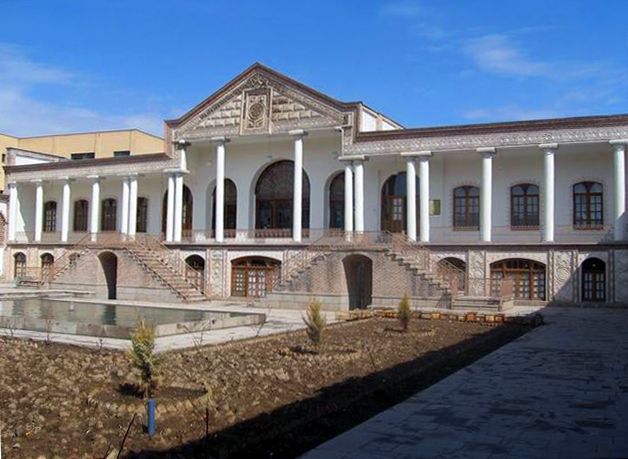House of Amir Nezam Garrousi, one of the dignitaries of Qajar era in Tabriz, was transformed into a specialized museum of Qajar period in 2006.
Due to its historical importance, the museum hosts a large number of admirers of art, culture and history.
The reason behind the importance of this museum, situated on Sheshgalan Avenue, is because of Tabriz’s sensitive historical and political position. In various periods, Tabriz was of paramount importance and this glory reached its zenith during the rule of Ilkhanid and Qajar dynasties.
In 1218 AH (after hegira), crown prince of Fath Ali Shah, Abbas Mirza, resided in Tabriz, which was the country’s command headquarters during wars between Iran and Russia. Beautiful buildings from Qajar period remain in Tabriz. House of Amir Nezam is one of such building.
The building was built during the era of Nasseriddin Shah by Amir Nezam Garrousi, who was the king’s chief of staff. In the king’s memoirs about his third trip to Europe, many references have been made about this building. It should be noted that after Nassereddin Shah’s era, governors of Azarbaijan also resided in this building.
Hassan Ali Khan Amir Nezam Garrousi, the former owner of this building, was among the affluent and renowned dignitaries of his time. He held important political and military posts for 64 years. Among his posts are ambassadorship in European countries and minister of Azarbaijan.iran tour
Amir Nezam Garrousi had a deep understanding of modern ways of statesmanship. This important figure made moves that paved the way for bringing about fundamental social changes in Iran.
He took vast interests in arts and calligraphy. Due to his endeavors, distinguished literary figures and calligraphers emerged. A number of his students, who learned principles of calligraphy from him, are responsible for momentous developments in Iranian calligraphy.
Amir Nezam participated in Herat wars with the ranks of colonel and brigadier general with immense courage and gallantry, and was appointed Iran’s ambassador to London and also supervised and protected Iranian students studying in European cities. When Amir Nezam was ordered to kill the people of Azarbaijan, he refused to do so and went into exile in Kerman where he died.
Today, only parts of this building remain, as other parts have been destroyed throughout history. Due to its historical precedence and value, the house was purchased by East Azarbaijan’s Cultural Heritage, Handicrafts and Tourism Department in 2001. It was subsequently registered as national heritage and underwent renovation.
The house has two stories and covers an area of 3,000 square meters with a built-in area of 1,500 square meters. Like other historical and important buildings of Tabriz, the house has two courtyards that are decorated with small gardens and large ponds.
Amir Nezam House
December 15, 2021
0 comment

Comment (0)